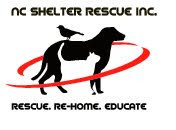Time is running out for the Humane Society of Richmond County’s local animal shelter.
In a meeting on Thursday, the Humane Society board voted unanimously to cease shelter operations as of Oct. 31, 2012, according to Director Valerie Davis.
Davis said the decision is due to a lack of funding.
“A couple of months back, I began presenting to the board,” she said. “I kept telling them that it’s really bad. We’ve been running about a $35,000 deficit for over a year. We need to start making some decisions.”
According to Davis, shelter maintenance requires approximately $26,000 a month, and expenses have been piling up.
The Humane Society of Richmond County formed in 1981 as a small cat shelter, she said. In 1999, the officers of the Humane Society approached the county government and proposed the county aid them in operating a shelter. In 2002, doors opened to the new animal shelter located at 529 U.S. Highway 74 West Business, in Rockingham.
“For the last ten years, it has hung in there,” Davis said on Friday. “But there have always been budget constraints and tough times … In our contract, if we can’t function and operate the shelter on the funds we get, it reverts back to the county.
“Last night I asked the board, as a group, to please make a decision tonight. I asked them if they were going to pull out, because, as the director, not only am I going to be unemployed, but I have 11 other employees. I need to start making provisions,” said Davis.
Humane Society Board Chair Evonne Swanson confirmed on Friday that a vote had been taken.
“We have voted as a board that we will not operate in that shelter and continue the contract with the county,” Swanson said. “We won’t be there unless the county assists us in some way … We cannot continue as we have been. There has to be a change.”
Swanson said the shelter can still continue just as it is, but it becomes the county’s responsibility.
Although Davis and Swanson both said Friday that the Humane Society’s plans to withdraw from the shelter had been finalized, a letter from Humane Society Attorney Kelly G. Williams of Deane, Williams & Deane to county officials hints at other options.
The letter to county officials reads, “It has become painfully obvious to the Humane Society of Richmond County, Inc. that it can no longer operate its animal shelter under the current income/expense projections for 2012 through 2013.”
However, toward the end of the letter, Williams wrote, “Time is of the essence for the Humane Society to restructure its income base. If the Society has not received firm commitments from the local governments by October 31, 2012, it will be forced to close its shelter and dissolve its corporation.”
According to the letter, the shelter could stay open with monetary contributions from local municipalities each month. Proposed allocations include $300 from Dobbins Heights, $500 from the Town of Ellerbe, $800 from the City of Hamlet, $250 from the Town of Hoffman, $100 from the Town of Norman, $1,000 from the City of Rockingham and $22,000 from Richmond County. Those figures are based on the number of animals that the Humane Society received from the city limits of each city or town and within Richmond County, the letter said. Municipalities could opt to be billed monthly per animal, each of which would cost $76.50, according the letter. It goes on to list the average number of animals received from each jurisdiction per year, for example 150 from Rockingham.
The letter also reads: “After careful review of past income/expense reports and the projected income/expense report for 2012-2013, the Humane Society estimates a deficit of $53,000.00. Currently, the Humane Society has a deficit of $44,000.00 from Fiscal Year 2011-2012.”
Richmond County Board of Commissioners Chairman Kenneth Robinette said Friday that if the county has to take over the shelter, it would do so.
“Our staff has been monitoring this over the last few weeks and has offered ideas and suggestions to the Humane Society,” said Robinette. “I understand they have sent a letter, which I have not yet seen. If the county takes over the shelter, I promise we’ll run it as efficiently and effectively as we can.”
Robinette also said, “The board will continue to support the Humane Society.”
County Commissioner Thad Ussery said, “I really hate to hear this, but we were trying to help them through their budget crunch. But if they won’t take advice, I don’t know what else they can do. If they give it up, we will have to take it over and run it more efficiently. There are some things that could be changed.”
“There are so many people in the community who have supported us for so long, that have a right to know what’s going on,” Davis said. “We want the community to know that the Humane Society isn’t going to cease to exist. We’re still an organization — we’re just not going to be operating the animal shelter.”
Due to its Oct. 31 closing date, Davis said the animal shelter is working to find a home for all 250 of its animals.
“We’re taking it week by week now,” she said. “We’re going to encourage folks to come and pull — to rescue. We probably will waive adoption fees. We’ve got extra dog houses and transport kennels that were donated to us, and I’m going to donate those with the dogs.”
Davis said the shelter will also adopt new shortened hours, and will be closed to the public on Sunday through Tuesday. It will remain open on Wednesday through Saturday from 12 to 3 p.m.
— Staff Writer Dawn M. Kurry can be reached at 910-997-3111, ext. 15, or by email at dkurry@heartlandpublications.com. Staff Writer Mallory Brown can be reached at 910-997-3111, ext. 16, or by email at mallorybrown@heartlandpublications.com.















